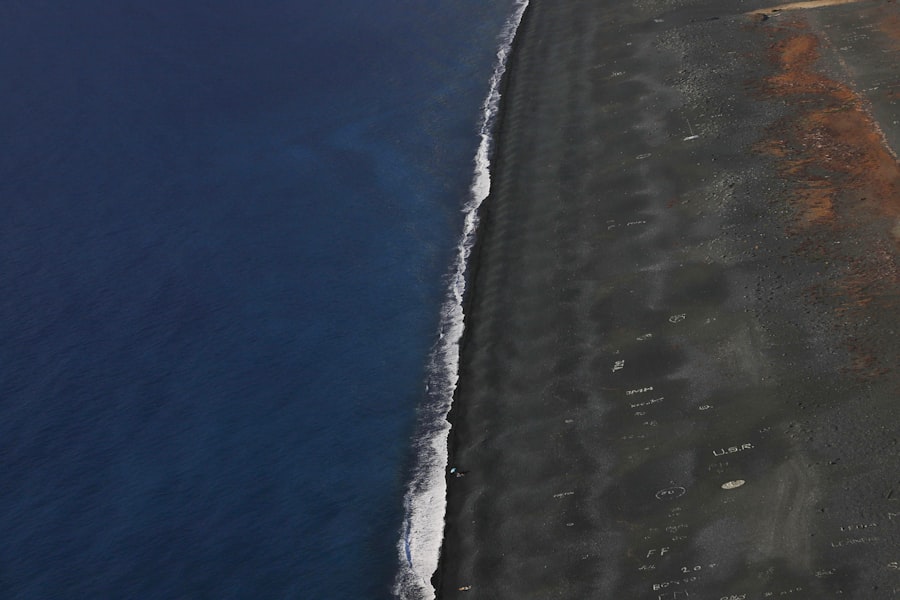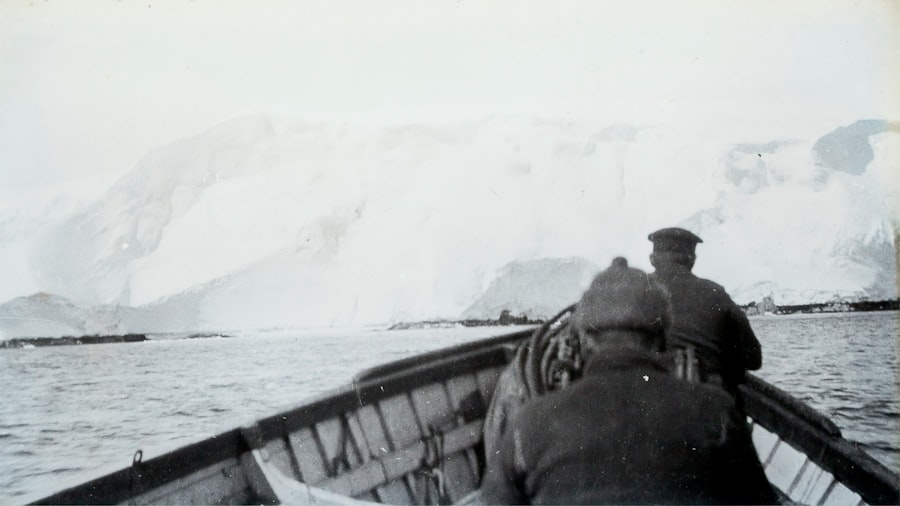The Drake Passage, a body of water that separates South America from Antarctica, is renowned for its tumultuous seas and breathtaking vistas. Stretching approximately 600 miles, it serves as a critical maritime route for vessels traveling to and from the Antarctic region. Named after the English explorer Sir Francis Drake, who navigated these waters in the late 16th century, the passage has become synonymous with adventure and exploration.
Its unique geographical position not only makes it a vital link between the Atlantic and Pacific Oceans but also a fascinating area for scientific research and wildlife observation. Navigating the Drake Passage is often considered a rite of passage for those venturing to Antarctica. The waters are notorious for their unpredictable weather patterns and rough seas, which can challenge even the most seasoned sailors.
However, this unpredictability is part of what draws adventurers to the region. The passage is not merely a route; it is an experience that encapsulates the raw beauty and power of nature. As travelers embark on their journey through these waters, they are met with a sense of awe and respect for the natural world that surrounds them.
Key Takeaways
- The Drake Passage is a body of water between South America’s Cape Horn and the South Shetland Islands of Antarctica, known for its rough seas and challenging sailing conditions.
- The weather in the Drake Passage is characterized by strong winds, high waves, and rapidly changing conditions, making it one of the roughest seas in the world.
- The wildlife in the Drake Passage includes various species of seabirds, penguins, seals, and whales, offering unique opportunities for wildlife enthusiasts and photographers.
- The Drake Passage holds historical significance as the route taken by famous explorers such as Sir Francis Drake and Charles Darwin, adding to its allure for history buffs and adventurers.
- Navigating the Drake Passage in March requires careful planning, preparation, and attention to safety precautions due to the challenging weather and sea conditions.
Weather and Climate in the Drake Passage
The weather in the Drake Passage is notoriously volatile, characterized by rapid changes that can occur within hours. The region experiences a maritime climate, influenced by the cold waters of the Southern Ocean and the warmer air masses from the north. This combination often results in strong winds, heavy rain, and sudden storms, making it essential for travelers to be prepared for a variety of conditions.
The average temperature in March, which marks the end of summer in the Southern Hemisphere, typically ranges from 30°F to 50°F (-1°C to 10°C), but it can feel much colder due to wind chill. March is particularly interesting in the Drake Passage as it transitions from summer to autumn. The days begin to shorten, and the weather can become increasingly unpredictable.
While some days may offer calm seas and clear skies, others can present formidable challenges with towering waves and fierce winds. This variability is a hallmark of the passage, and those who venture through it must remain adaptable and vigilant. Understanding these climatic nuances is crucial for anyone planning a journey through this remarkable stretch of water.
Wildlife in the Drake Passage

The Drake Passage is not only a challenging maritime route but also a vibrant ecosystem teeming with wildlife. The nutrient-rich waters support a diverse array of marine life, making it a prime location for observing various species of seabirds, seals, and whales. Among the most notable inhabitants are the majestic albatrosses, which glide effortlessly over the waves, and the playful orcas that can often be spotted breaching in the distance.
The passage serves as a critical feeding ground for these animals, particularly during the summer months when food sources are abundant. In addition to birds and marine mammals, the waters of the Drake Passage are home to an impressive variety of fish and krill, which form the foundation of the Antarctic food web. The presence of these organisms attracts larger predators, creating a dynamic environment that is both fascinating and essential for ecological balance.
For wildlife enthusiasts and photographers, the Drake Passage offers unparalleled opportunities to witness these creatures in their natural habitat, making it a highlight of any Antarctic expedition.
Historical Significance of the Drake Passage
| Aspect | Details |
|---|---|
| Discovery | Discovered by Sir Francis Drake in 1578 |
| Exploration | Important route for early explorers like Magellan and Shackleton |
| Scientific Significance | Key area for oceanographic and climate research |
| Maritime Importance | Connects the Atlantic and Pacific Oceans |
The historical significance of the Drake Passage cannot be overstated. It has long been a critical route for explorers, scientists, and traders seeking to navigate between continents. Sir Francis Drake’s voyage in 1578 marked one of the first recorded passages through these waters, paving the way for future exploration and trade routes.
Over the centuries, many notable explorers have traversed the Drake Passage, each contributing to our understanding of this remote region and its challenges. In addition to its role in exploration, the Drake Passage has also been pivotal in scientific research. The unique oceanographic conditions found here have made it an ideal location for studying climate change, marine biology, and ocean currents.
Researchers have conducted numerous studies in this area to better understand its impact on global weather patterns and marine ecosystems. As such, the passage holds not only historical significance but also contemporary relevance in addressing some of today’s most pressing environmental issues.
Tips for Navigating the Drake Passage
For those planning to navigate the Drake Passage, preparation is key to ensuring a safe and enjoyable journey. First and foremost, travelers should choose their vessel wisely.
Additionally, selecting a reputable tour operator with experience in Antarctic travel can greatly enhance safety and enjoyment. Packing appropriately is another crucial aspect of preparation. Travelers should bring layers of clothing that can be easily added or removed as conditions change throughout the day.
Waterproof outer layers are essential to protect against rain and spray from waves. Furthermore, investing in high-quality sea sickness medication can make a significant difference for those prone to motion sickness. By taking these precautions, travelers can better navigate the challenges presented by this remarkable passage.
The Experience of March in the Drake Passage

March offers a unique experience for those traversing the Drake Passage. As summer draws to a close in Antarctica, wildlife activity peaks, providing travelers with exceptional opportunities for observation. The days may still be relatively warm compared to winter months, allowing for more comfortable excursions on deck or small boat landings on nearby islands.
This time of year also sees fewer tourists than peak summer months, creating a more intimate atmosphere for exploration. The changing landscape during March adds another layer of beauty to the journey. Icebergs begin to take on different shapes as they melt and shift with changing temperatures, creating stunning visual displays against the backdrop of deep blue waters.
The sunsets during this time can be particularly breathtaking, casting vibrant hues across the sky as day transitions into night. For many travelers, these moments become cherished memories that encapsulate their adventure through one of the world’s most remote regions.
Challenges of Traveling through the Drake Passage in March
While March presents many opportunities for exploration in the Drake Passage, it also comes with its own set of challenges. As autumn approaches, weather patterns can become increasingly unpredictable, leading to rough seas that may deter some travelers. High winds and large swells can create discomfort on board, particularly for those unaccustomed to maritime travel.
It is essential for travelers to mentally prepare for these conditions and remain flexible with their plans. Additionally, wildlife sightings can be sporadic during this transitional period as some species begin their migration southward or prepare for winter hibernation. While many travelers hope to see an abundance of marine life during their journey, patience may be required as nature takes its course.
Understanding these challenges allows travelers to approach their adventure with realistic expectations while still embracing the thrill of exploration.
Safety Precautions for March Travel in the Drake Passage
Safety should always be a top priority when traveling through the Drake Passage, especially during March when conditions can be unpredictable. Travelers should familiarize themselves with safety protocols provided by their tour operators before embarking on their journey. This includes understanding emergency procedures and knowing how to properly use safety equipment such as life jackets.
It is also advisable for travelers to stay informed about weather forecasts throughout their journey. Many expedition vessels are equipped with advanced technology that allows them to monitor conditions closely and adjust itineraries as needed for safety reasons. By remaining vigilant and adhering to safety guidelines, travelers can significantly reduce risks associated with navigating this challenging passage.
Unique Opportunities for Adventure in the Drake Passage
The Drake Passage offers unique opportunities for adventure that extend beyond simply crossing from one continent to another. For thrill-seekers, activities such as kayaking among icebergs or participating in guided zodiac excursions provide an exhilarating way to experience this remote environment up close. These activities allow travelers to engage directly with nature while gaining a deeper appreciation for its beauty and power.
Moreover, many expedition cruises offer educational programs led by experienced naturalists who share insights about marine life, geology, and climate science specific to the region. These interactive experiences enrich travelers’ understanding of their surroundings while fostering a sense of connection to this extraordinary part of the world. For those seeking adventure combined with education, few places rival the opportunities presented by the Drake Passage.
What to Pack for a March Journey through the Drake Passage
Packing wisely is essential for anyone embarking on a journey through the Drake Passage in March. Given the unpredictable weather conditions, layering is key; travelers should include thermal base layers, insulating mid-layers like fleece or down jackets, and waterproof outer shells to protect against wind and rain.
In addition to clothing essentials, travelers should consider bringing personal items such as sunscreen and lip balm to protect against sun exposure during bright days at sea. A good pair of binoculars can enhance wildlife viewing experiences while cameras with waterproof cases will help capture unforgettable moments along the way. By preparing thoughtfully with appropriate gear and supplies, travelers can ensure they are ready for whatever adventures await them in this remarkable passage.
Embracing the Wild and Unpredictable Journey
The Drake Passage stands as a testament to nature’s raw power and beauty—a place where adventure meets unpredictability at every turn. For those willing to embrace its challenges and rewards alike, it offers an unparalleled experience that leaves lasting impressions on all who traverse its waters. From witnessing majestic wildlife to navigating tumultuous seas under ever-changing skies, each journey through this remarkable passage becomes a unique story waiting to be told.
As travelers reflect on their experiences in March within this extraordinary region, they come away not only with memories but also with a deeper understanding of our planet’s delicate ecosystems and their importance in shaping our world. The Drake Passage invites adventurers from all walks of life to explore its wonders while reminding them that sometimes it is within uncertainty that true beauty lies—an invitation worth accepting time and again.
The Drake Passage, known for its turbulent waters, presents a unique experience for travelers in March. During this time, the weather can be unpredictable, with a mix of calm days and intense storms, making it a thrilling journey for those aboard ships navigating this route. The passage serves as a critical point for marine life and offers breathtaking views of the surrounding seascape. For more insights into the geographical significance and challenges of the Drake Passage, you can explore a related article on MyGeoQuest, which delves into the intricacies of this fascinating maritime corridor.
WATCH NOW! Drake Passage: Earth’s Deadliest Waters Revealed
FAQs
What is the Drake Passage?
The Drake Passage is the body of water between the southern tip of South America and the northern tip of the Antarctic Peninsula. It is known for its rough seas and challenging sailing conditions.
What is the weather like in the Drake Passage in March?
In March, the weather in the Drake Passage can be quite unpredictable. It is transitioning from summer to autumn, so temperatures can range from around 0°C to 10°C (32°F to 50°F). Storms and strong winds are common, making for rough seas.
What are the sea conditions like in the Drake Passage in March?
The sea conditions in the Drake Passage in March can be quite rough. The area is known for its strong winds and large waves, which can make for a challenging sailing experience.
What wildlife can be seen in the Drake Passage in March?
In March, wildlife in the Drake Passage may include various species of seabirds, such as albatrosses and petrels, as well as whales and seals. It is a popular area for wildlife enthusiasts and birdwatchers.
Is it safe to travel through the Drake Passage in March?
Traveling through the Drake Passage in March can be challenging due to the rough seas and unpredictable weather. It is important to be prepared for the conditions and to travel with an experienced crew. It is advisable to consult with a professional before planning a trip through the Drake Passage in March.
